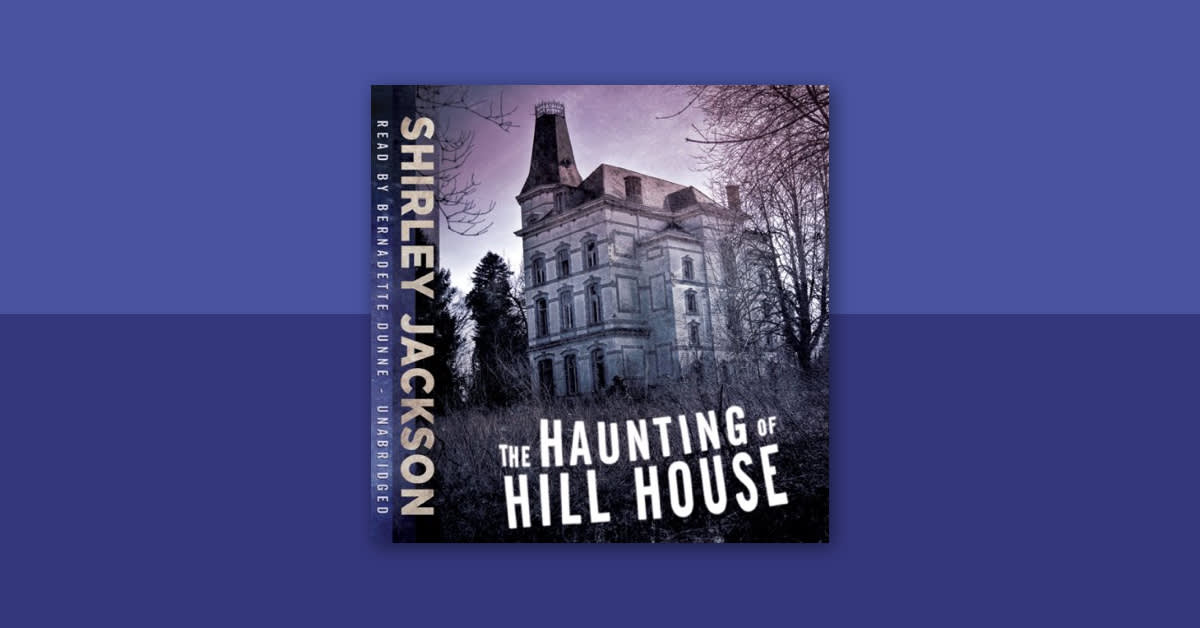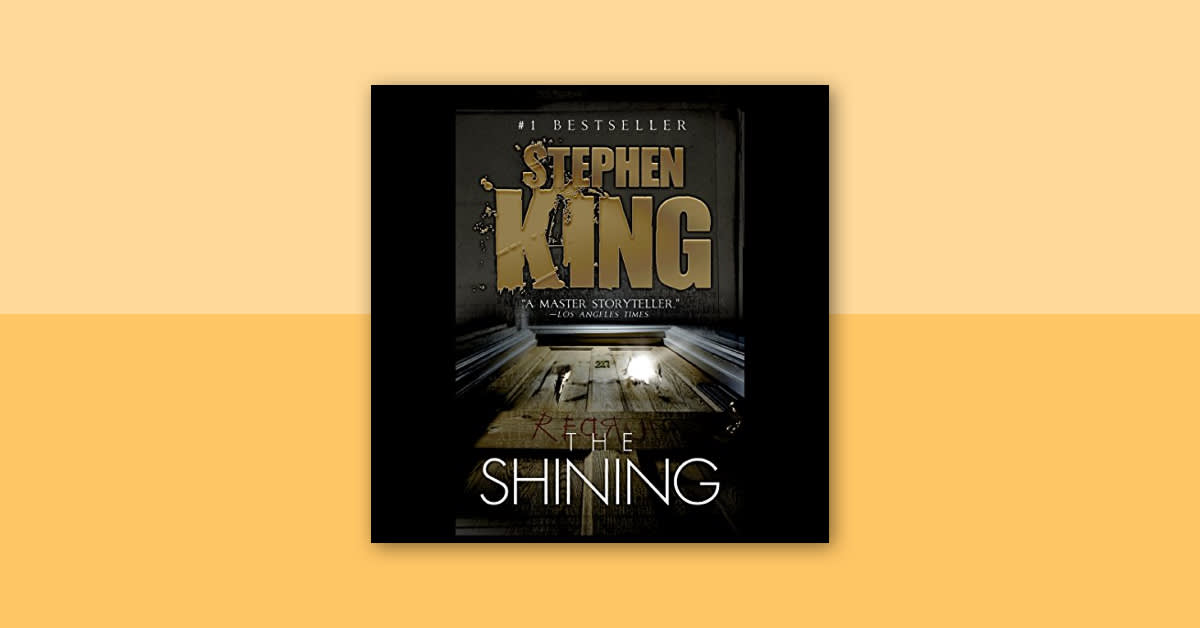Netflix's series The Haunting of Hill House is widely popular and has helped launch the careers of a multitude of actors, including Victoria Pedretti, who now stars in You and is known as a modern scream queen. The show has also sparked a renewed interest in the book on which it was based: Shirley Jackson's 1959 gothic horror classic, The Haunting of Hill House. More than a memorable ghost story, Jackson's novel is an iconic work of horror literature that has inspired countless other writers—Stephen King, Carmen Maria Machado, Guillermo del Toro, and Neil Gaiman among them—and was finalist for the National Book Award. But how does the television series compare to the novel?
Warning: The following article contains spoilers for The Haunting of Hill House.
What inspired The Haunting of Hill House?
Shirley Jackson was inspired to write the novel after reading about a group of psychic researchers who spent time in a house believed to be haunted to study the paranormal events there. In an essay, Jackson explained that she was less interested in the investigation itself and more intrigued by what could be learned about the people conducting the investigation. And so character is a driving factor of Jackson's story.
What is The Haunting of Hill House about?
The Haunting of Hill House centers around four main characters who seek to investigate the paranormal activities of Hill House. Luke Sanderson is the heir to Hill House. He acts as host to the others who join him there for a summer devoted to studying the eerie happenings. Dr. John Montague is a supernatural investigator who hopes to find scientific evidence to support the existence of the supernatural. Montague invites two other people to join his investigation due to their previous experiences with supernatural events. The first is Eleanor Vance, a young woman who has lived much of her life as a recluse, caring for her disabled mother. The second is Theodora, an artist and bohemian who thirsts for new experiences.
Although the four new tenants of Hill House get along quite well, it's not long before their perfect summer setup is interrupted by some haunts. The name of the novel promises hauntings, after all. First, they begin to hear banging noises and echoes in the hallways. Doors open and close without reason. And while all of these things could be explained away by wind or the creakiness of an old house, it's hard to find an explanation when written messages start appearing on the walls. Then, Theodora finds blood all over her clothes.
Although every person in the house is touched by hauntings, Eleanor seems especially susceptible to the supernatural powers of Hill House. In fact, she begins to feel a deep connection to the house, as if she can feel and see everything the house feels and sees. Whether it's real or all in her head is unclear, but Eleanor thinks she is able to feel the others moving around the house and see what they're doing. Indeed, it seems as if the house is consuming her, and Eleanor, who has for most of her life felt closed off from the outside world, welcomes the change.
The novel is set in a haunted mansion so named "Hill House" because it lies amongst many hills. The house has a sordid past, including, as one character puts it, "suicide and madness and lawsuits." Those who know about the house's history refuse to stay in it after dark, and previous tenants of the house have left in an unexpected hurry, long before their lease ran out. Simply put, Hill House is a perfectly unsettling setting for a haunted house story.
The Haunting of Hill House: Book vs. Show
If you've seen the Netflix show but have yet to listen to Shirley Jackson's critically acclaimed novel, then a lot of the synopsis of the novel outlined above probably seems quite unfamiliar to you. Indeed, the book and the Netflix series are quite different. Mike Flanagan's 2018 horror series is set in the summer of 1992 and centers around the Crain family—Hugh and Olivia Crain and their five children: Steven, Shirley, Theodora, Luke, and Eleanor. The family moves into Hill House with the intention of renovating it and later selling it, but the longer they stay, the more every member of the family begins to experience paranormal events. When tragedy strikes, the family moves away, but the house never stops haunting them, and 26 years later, each of them has to return in one way or another.
While set in the same house, the series is in many ways a totally different story, but that doesn't mean there aren't parallels. Here's a breakdown of the characters in the TV series and how they're connected to Jackson's original story.
Hugh Crain
Hugh Crain is the patriarch of the Crain family. While this character is completely different from any character in the book, his name is a nod to the source material. In Shirley Jackson's novel, Hill House was built in the late 19th century by an eccentric architect named Hugh Crain. Similar to his namesake, the Hugh Crain of the show plans on working on the house and then flipping it for a profit, so in that way he is also connected to the building of the property. (Or the rebuilding, in this case.)
Olivia Crain
Olivia Crain is the matriarch of the Crain family. Like her husband, she designs houses. While Olivia doesn't have a direct counterpart in the novel, her storyline is similar to that of Eleanor's. Of everyone staying at Hill House, she is the most affected by the ghosts. Ultimately, when everyone else leaves the house, Olivia remains.
Steven Crain
Steven Crain is the eldest of the Crain children. As an adult, he is the one who writes down the events of Hill House as if it were fiction, because he's skeptical that the hauntings were real. Steven does not have a clear counterpart in the novel, but his character makes sense for the story—Steven serves as an outsider, observing and analyzing the events that happened to his family. Fans of the show have speculated that Steven's name may be a nod to Stephen King, who is an avid enthusiast of Shirley Jackson's work.
Shirley Crain
Shirley Crain is the eldest daughter. Her name is undeniably a nod to Shirley Jackson, the author of The Haunting of Hill House, the novel that inspired the show. In the TV adaptation, Shirley grows up to have a funeral home, which she runs with her husband, Kevin. They have two children, a son and a daughter.
Theodora "Theo" Crain
Theo Crain is the middle child in the Crain family. She is clearly a nod to a character in the novel, Theodora, though Jackson doesn't give her a last name. In the novel, it is hinted that Theodora is a lesbian; in the Netflix series, Theo is bisexual. Jackson's original Theodora is an artist. Television’s Theo has a different gift: She is a child psychologist with extreme ESP abilities. When Theo touches people with her bare hands she experiences psychic knowledge of them, grasping their feelings and their experiences.
Luke Crain
Luke is one of the twins and the youngest son in the Crain family. He struggles with addiction, turning to drugs to deal with the memories of what he experienced at Hill House. Luke's name is taken from the character Luke Sanderson in the novel. But aside from a shared name, the two Lukes have very little in common. Jackson's Luke is a greedy and generally unsympathetic character who cares only about the money Hill House can bring him. The show's Luke, while not without his flaws, is a sympathetic character who's trying to be a good person and be there for his family.
Eleanor "Nell" Crain
Eleanor is the second twin and the youngest daughter of the Crain family. Like her namesake in the novel, Eleanor Vance, she is one of the people most deeply affected by the hauntings at Hill House. As a child, she was repeatedly haunted by a spirit she refers to as the "Bent-Neck Lady." Years later, when Nell is an adult, the Bent-Neck Lady returns to haunt her. In the television series, Nell Crain becomes Eleanor Vance when she marries Arthur Vance.
Clara Dudley
Clara Dudley is one of the two caretakers of Hill House before the Crain family moved in. Although a minor character in the television series, she is directly connected to Shirley Jackson's original work. In the novel, Clara Dudley and her husband, Horace, were the two caretakers of Hill House before the paranormal investigators moved in for the summer. Wisely, both Clara and Horace refused to stay in the house overnight.
Horace Dudley
Horace Dudley is the other half of the caretaker duo. Like Clara, he is a character in the novel. It should be noted, however, that while Jackson's version of the Dudleys serves as a sort of comic relief during parts of the novel, the Dudleys in the Netflix series have a much darker story.
Abigail Dudley
Abigail is the daughter of Clara and Horace Dudley. In the novel, the Dudleys do not have a daughter, but there is an Abigail—she's the daughter of Hugh Crain, the architect of Hill House. In the Netflix series, Abigail is poisoned at Hill House and her ghost remains there. Once the Dudleys realize that Abigail will remain as a ghost at Hill House for eternity, they vow to make sure the house is protected forever. When they die, Clara and Horace wish to die at Hill House as well, in the hopes of being reunited with their daughter.
Easter Eggs and References in The Haunting of Hill House
There are countless nods and references to Shirley Jackson’s classic in the Netflix adaptation. Here are just a few:.
In the series, the rehab center that Luke attends is called The Sanderson Center. This is Luke's last name in Jackson's The Haunting of Hill House.
Nell's doctor in the Netflix series is named Dr. Montague, which is the name of the paranormal researcher in Shirley Jackson's book.
Like in the novel, the inhabitants of Hill House in the Netflix series are disturbed to find messages written for them on the walls. When Olivia finds Nell’s name written on the wall, she scolds her daughter for destroying the house. Later, Theodora peels back the wallpaper to reveal that the writing says, “Welcome home, Nell.”
In the Netflix series, two of the main character's deaths occur on the spiral staircase. In the novel, Hugh Crain's wife dies after falling from the top of the staircase.
In both the book and the Netflix series, Eleanor (Nell) has a story that involves "a cup of stars." In the book, Eleanor sees a little girl at a diner who doesn't want to have her drink because it's not in her special cup with stars in the bottom. Her mother tells her if she drinks from the plain cup now, she can drink from the cup of stars later. Overhearing this, Eleanor thinks, "Don’t do it… insist on your cup of stars; once they have trapped you into being like everyone else you will never see your cup of stars again.” In the Netflix series, Mrs. Dudley gives a young Nell a teacup with stars in the bottom, and it is Mrs. Dudley who says these very lines from the book.
In the Netflix series, Olivia tells her son Luke a story about when she was younger. She drove past a house covered with flowers and suddenly imagined her whole life in the house—people would come to have their fortunes told, she would brew love potions, and she would have a robin. That daydream meant so much to her, Olivia tells Luke, that she almost named him “Robin.” This sequence is inspired by a fantasy Eleanor has in the novel when she's driving by herself through the countryside.
In the novel, Shirley Jackson quotes Shakespeare's Twelfth Night when Eleanor, upon seeing Hill House for the first time, says to herself: “Journeys end in lovers meeting.” That line is repeated several times throughout the book. In the Netflix show, Hugh gives his daughter Eleanor a watch with this phrase engraved on it.
In the novel, Theodora and Eleanor hold hands one night when they are frightened. Later, Eleanor comes to the chilling realization that it was not Theodora's hand she had been holding. There's a similar incident in the series, but the roles are reversed. One night, Theo is holding Nell's hand, only to realize that, when the hand starts gripping too tight, that it isn't Nell at all.
In the TV series, Steven's voiceover lines about Hill House are lines taken directly from Jackson's novel.
Further Listening for Fans of The Haunting of Hill House
If you listen to The Haunting of Hill House and want more audiobooks like it, check out the rest of Shirley Jackson's masterful collection of works, especially We Have Always Lived in the Castle. Other audiobooks sure to appeal to The Haunting of Hill House fans include The Haunting of Ashburn House by Darcy Coates and Hell House by Richard Matheson, narrated by the incredible Ray Porter.




